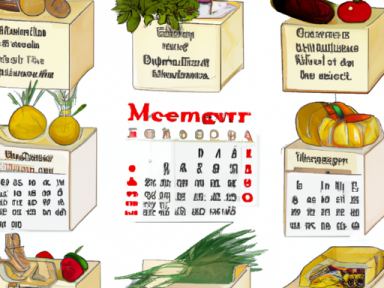
Foraging by Season: A Guide to Finding Food in the Wilderness
When it comes to survival and self-reliance, knowing how to forage for food is an essential skill. In a world where uncertainty looms, being able to find edible plants, nuts, and berries can mean the difference between going hungry and thriving. In this article, we will provide you with a seasonal guide to help you navigate the wilderness and discover nature’s bounty throughout the year.
Spring
As winter gradually gives way to warmer weather, the spring season brings forth a variety of edible plants. Take advantage of this time to gather fresh greens and early blooms. Some forageable options include:
- Dandelion Greens: Packed with vitamins and antioxidants, dandelion greens can be used in salads or cooked as a side dish.
- Nettle: Despite its sting, nettle leaves can be cooked and used as a nutritious spinach substitute.
- Wild Garlic: Easily identifiable by its distinct smell, wild garlic adds a flavorful punch to any dish.
Summer
The long days of summer offer a wide array of foraging opportunities. Make the most of the abundance of fruits and vegetables available during this season. Consider foraging:
- Blackberries: These juicy fruits can be found in abundance and are perfect for snacking on or incorporating into desserts.
- Raspberries: Similar to blackberries, raspberries can be enjoyed fresh or made into preserves.
- Wild Strawberries: Smaller but packed with flavor, wild strawberries are a delightful treat when stumbled upon.
Fall
Fall brings a rich tapestry of colors to the landscape, and it’s also a great time for foraging. This season, keep an eye out for:
- Acorns: A versatile nut, acorns can be ground into flour or roasted for a crunchy snack.
- Hazelnuts: These nutty treats can be enjoyed on their own or used in various recipes.
- Hawthorn Berries: Rich in antioxidants, hawthorn berries can be used to make jams, jellies, or infused into tea.
Winter
As the temperature drops and the landscape transforms into a winter wonderland, foraging becomes more challenging. However, certain plants and nuts can still be found even in the harshest conditions:
- Rose Hips: These bright red berries can be harvested after the first frost and used to make herbal teas or syrups.
- Pine Needles: Rich in vitamin C, pine needles can be steeped in hot water to make a nourishing tea.
- Wintergreen: Easily recognizable by its minty scent, wintergreen leaves can be chewed for a burst of flavor or used in recipes.
Remember, foraging requires knowledge and caution. Always properly identify plants before consuming them, as some can be toxic. Invest time in studying and practicing your foraging skills to ensure your safety and success. By honing this skill, you’ll not only be better prepared for emergencies but also gain a deeper connection with the natural world around you.



GIPHY App Key not set. Please check settings